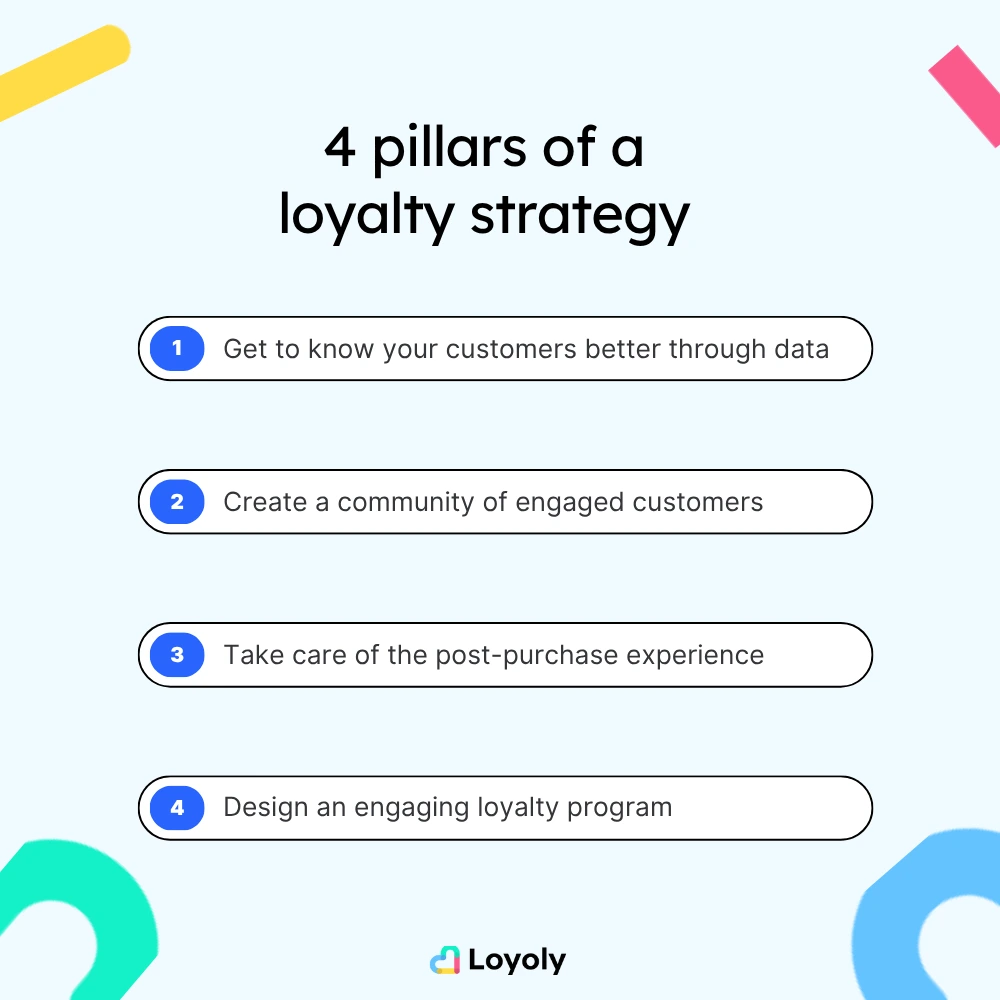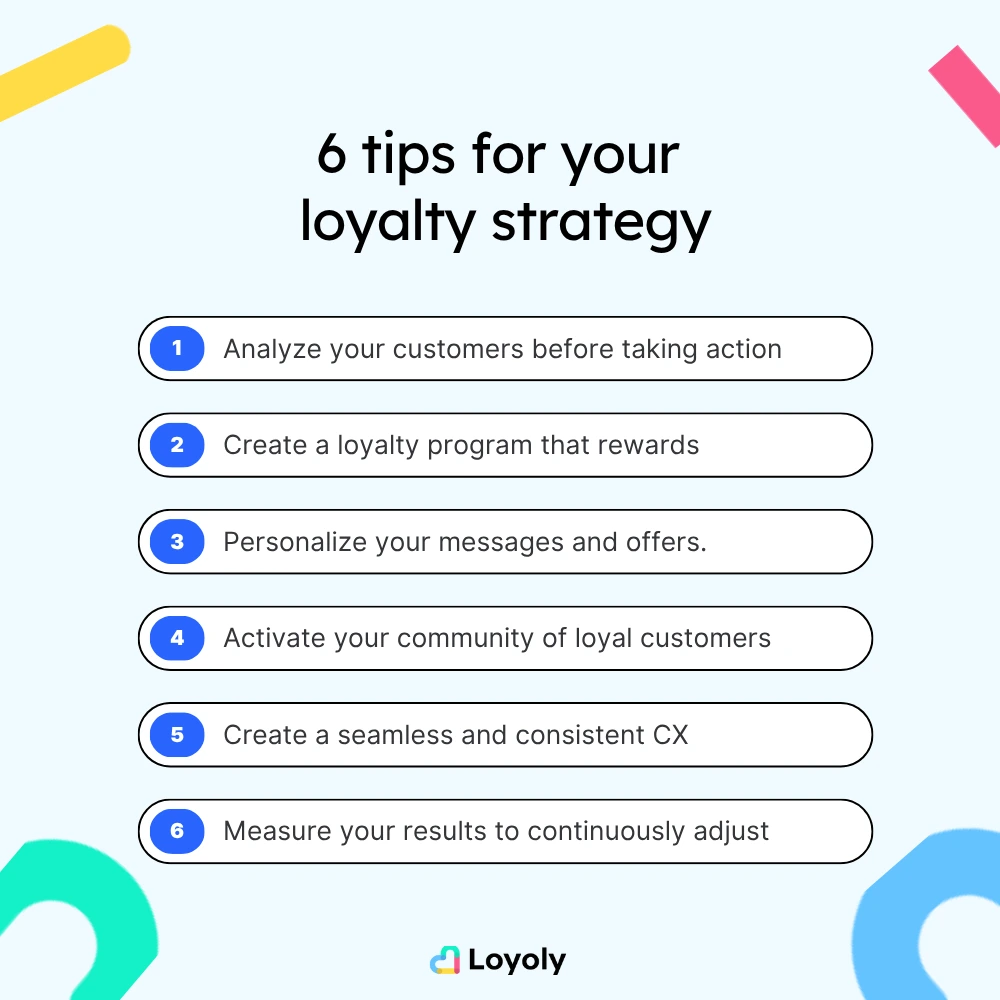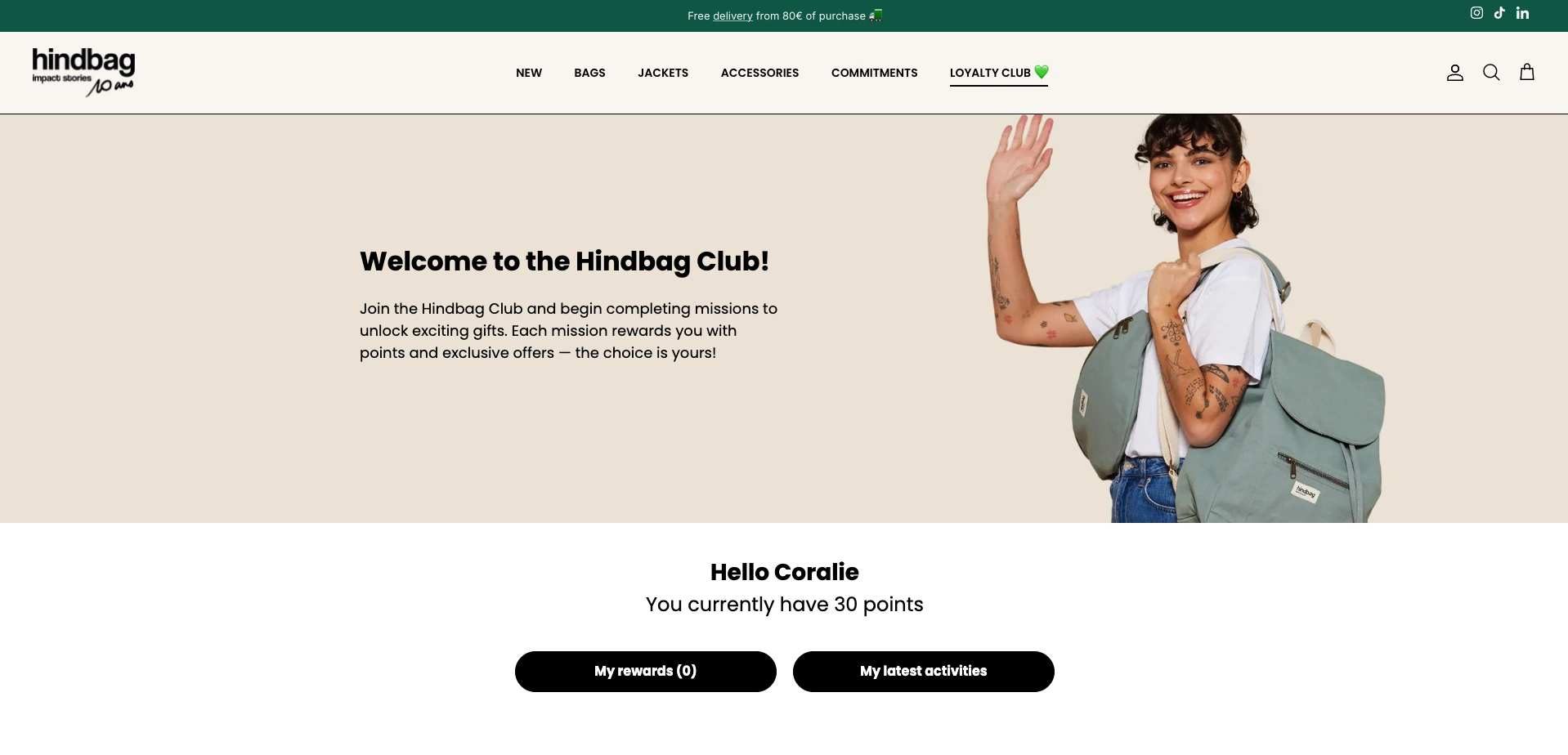Loyalty is anything but a bonus in an e-commerce strategy.
It's actually a key lever for making your acquisition efforts profitable.
And yet, too many companies stop at a stamp card or a birthday discount.
A real loyalty strategy is based on a long-term vision.
It requires knowing your customers, adapting your actions to their expectations, and above all... never letting up on your efforts.
There is no magic formula, but rather a method to be built step by step, based on your model, your channels, and the relationship you want to create with your customers.
Let's take a look at how to build this strategy on a solid foundation.
Quick definition of a loyalty strategy
A loyalty strategy is a set of actions designed to ensure that a customer does not stop at their first purchase.
The goal? To get them to come back, stay, and talk about you.
To achieve this, you need to take their life cycle into account.
A newly acquired customer does not have the same expectations as a regular customer.
Each stage deserves a tailored approach.
That's why we talk about a long-term vision.
Building loyalty isn't about piling on promotions; it's about building a real relationship.
And in the long run, that relationship becomes a much more profitable growth driver than pure acquisition.
Why implement a customer loyalty strategy?
Building loyalty isn't just “nicer” than converting.
It's a real business strategy.
And it can profoundly transform your profitability.
Here's why it deserves your full attention.
Improve profitability
Acquiring a customer costs up to seven times more than retaining one.
And a loyal customer spends on average much more than a new one.
In other words, loyalty increases margins without increasing the marketing budget.
Create repeat business
Building loyalty means you don't have to start from scratch with every sale.
A customer who returns regularly becomes a stable, even predictable source of revenue.
This is a real lever for smoothing out fluctuations in turnover.
Turn your customers into ambassadors
A satisfied and committed customer talks about you.
They recommend you, refer you, and post about you.
In short, they do the work for you.
And often with more impact than advertising.
Make better use of your customer data
The longer a customer stays, the more you learn about them.
Their preferences, habits, and purchasing patterns.
All this data can be used to personalize the experience and anticipate their needs.
Differentiate yourself in the long term
A good customer experience, well orchestrated over time, creates brand loyalty.
This is what makes the difference when your competitors are fighting with promotions.
👉 If you want to know more, we've put together an article with all you need to know about loyalty programs
4 pillars of an effective loyalty strategy
For a loyalty strategy to work, it must be built on a solid foundation.
No need to multiply tools: just focus on the right levers.
Here are four essential ones for creating a lasting relationship with your customers.

1. Get to know your customers better with data
It's impossible to build loyalty without understanding who you're talking to.
The key is first-party data.
This is all the data that your customers give you directly: purchase history, frequency, behavior on the website, etc.
This information allows you to build relevant segments and tailor your messages at the right time, on the right channel.
2. Design an engaging loyalty program
A good loyalty program is a system that makes people want to come back.
Points, statuses, referrals, cashback... there are several models to choose from, which can be adapted to your target audience.
👉 If you're not sure, we've put together 7 examples of loyalty programs.
The recipe for success? Gamification, rewards with high perceived value, and above all, a simple mechanism.
3. Focus on the post-purchase experience
This is often where it all happens.
Once the order has been placed, you have a window of opportunity to strengthen the bond.
A thank-you email, a usage tip, a request for feedback...
Every follow-up counts.
And the more automated it is, the smoother it will be.
The goal? Stay in touch, add value to the purchase, and set the stage for the next interaction.
Because a customer who feels cared for is a customer who will come back.
Pssst... You might find this interesting!
We can probably help with your post purchase engagement. Check out our platform!
4. Create a community of engaged customers
The most loyal customers want more than just a good product.
They want to be part of a brand they can identify with.
Show them you value them.
Highlight their reviews, photos, and stories.
Offer them exclusive benefits.
Give them the means to become ambassadors.
And if your brand has strong values, show it.
If your strategy is well-developed, it can strengthen engagement and loyalty if you use it correctly.
Our 6 tips for a well-constructed strategy
Implementing a loyalty strategy is not about piling on random actions.
Each lever must be thought out as part of a coherent whole, aligned with your customer journey.
Here are 6 tips to lay the right foundations and make them last.

1. Analyze your customers before you act
Before you launch anything, start by observing.
Who buys from you? How often? And above all, who comes back?
This is where first-party data comes in: your CRM, your analytics, your customer feedback.
Anything that gives you a clear picture.
Identify high-potential customers.
Those who buy often.
Or who spend more than others.
Use the right criteria: recency, frequency, value.
Then segment.
Because you don't talk to all your customers in the same way.
And it's precisely this differentiation that will make your actions more effective.
2. Create a loyalty program that rewards intelligently
A good program isn't just a points card forgotten in a drawer.
It's a driving force. It should make people want to come back, but also get involved.
Choose a mechanism that is easy to understand.
Accumulated points, levels to unlock, missions to complete, cashback, etc.
As long as it is clear and consistent with your brand, you are on the right track.
The rewards must be appealing.
There is no need to offer discounts left, right, and center.
What matters is the perceived value.
Early access, a special offer, a unique experience.
And to increase the impact tenfold, consider referrals.
This is often the most profitable way to activate your base of satisfied customers.
3. Personalize your messages and offers
Generic messages don't build loyalty.
If you want to score points, show your customers that you know them.
Tailor your offers to their behavior.
An abandoned shopping cart? A targeted reminder.
A repeat purchase? A personalized recommendation.
Once again, your data is your best ally.
Choose the right channels.
Some people prefer email, others prefer text messages or push notifications.
Respect their habits, and your engagement rate will skyrocket.
Finally, activate post-purchase triggers.
A follow-up email. A usage tip. A request for feedback.
These small gestures prolong the relationship and strengthen trust.
4. Activate your community of loyal customers
Some customers are more than loyal: they are your ambassadors.
They talk about you, recommend you, and defend you.
But you still need to give them a place.
Put them in the spotlight.
Ask them to share their experiences.
Photos, testimonials, content they have created: all of this feeds your credibility.
Reward them with badges, VIP status, exclusive access.
This type of recognition works very well and doesn't cost much.
And above all, automate invitations to refer friends.
A satisfied customer at the right time can generate new sales effortlessly.
5. Create a smooth and consistent customer experience
Nothing ruins loyalty like a bumpy journey or invisible customer service.
The experience matters as much as the product.
Sometimes more.
Be flawless at every point of contact.
Your website, your order funnel, your customer service, your return policy... everything must be simple, clear, and reassuring.
Train your teams to deliver the same high standards.
The customer should not feel any difference between your channels.
And after the purchase, continue to provide support.
A tutorial, a follow-up message, easy-to-find customer service contact information...
It's the little things that keep customers coming back.
6. Measure your results to make continuous adjustments
You can't improve what you don't measure.
This is especially true for customer loyalty.
Set your indicators.
Repeat purchase rate, customer lifetime value, NPS, referral rate...
These are the metrics that will tell you if your strategy is working.
Test, iterate, adjust. The right content, the right time, the right channel...
You'll quickly see what creates the most engagement.
And above all, centralize everything in a clear dashboard.
There's nothing worse than navigating in the dark.
A good loyalty strategy also means being able to read performance.
Example of a successful strategy from Hindbag
Hindbag, a responsible textile accessories brand, had a simple but crucial challenge: to improve customer loyalty while building an engaged community around its values.
Until now, customer loyalty had been based mainly on product quality and inspiring communication.
But there was no formalized system to really encourage engagement after purchase.
With Loyoly, the brand has structured a clear strategy to reward post-purchase micro-actions.
Posting a review, referring a friend, following the brand on Instagram or TikTok... every action becomes a mission, visible and valued.
The community plays along.
Customer feedback is concrete.
More online reviews, more shares on social media, and above all, a real dynamic of natural recommendation.
All without relying on promotions.
This strategy allows Hindbag to build loyalty while reinforcing its brand DNA: responsible, committed, and driven by an active community.
👉 Read the detailed case study with specific figures in the Hindbag loyalty case study

How can you measure the performance of your loyalty strategy?
Implementing a strategy is good.
But knowing if it works is essential.
Without measurement, you risk investing in actions that don't engage anyone.
That's why tracking the right indicators is crucial to progress.
Key indicators to track
Start with the repeat purchase rate.
This is the easiest to read: how many customers come back?
Next, look at the retention rate.
This tells you how long you keep your customers.
CLV, or Customer Lifetime Value, allows you to estimate how much a customer will earn you over time.
The higher it is, the more profitable your strategy is.
Also consider NPS.
This recommendation score reveals the level of satisfaction and the potential for word-of-mouth advertising.
Finally, monitor the churn rate. It shows how many customers you are losing.
If it rises, it's a sign that you need to adjust your approach.
There's no need to track ten metrics.
The key is to read them regularly and link them to your specific actions.
Build a customer loyalty dashboard
All these indicators are only meaningful if they are accessible, up to date, and centralized.
In other words, you need a real dashboard.
Not a last-minute Excel file.
Group your data in a single tool.
Connect your CRM, analytics, and email campaigns.
And above all, structure the display so that your indicators are readable at a glance.
That's exactly what Loyoly does.
The platform automatically centralizes the performance of your customer loyalty actions: referrals, missions, completion rates, engagement rates.
You can see in real time what's working, what's stagnating, and which actions to prioritize.
This saves you a huge amount of time and makes management much clearer.
Launch your e-commerce customer loyalty strategy with Loyoly
Building loyalty isn't just a marketing checkbox.
It's a growth lever you can activate right now, without complicating your organization.
You have everything you need: data to better understand your customers, tools to create an engaging program, key moments to nurture post-purchase, and a community to activate.
But you still need to orchestrate all of this in a fluid and consistent way.
That's where Loyoly comes in. You can set up easy-to-activate engagement mechanisms, such as:
- post-purchase missions
- automated referrals
- personalized rewards.
All in a clear interface designed to save you time and, above all, to measure the impact of your actions in concrete terms.
Find out more about our loyalty programs

.png)






.webp)


.png)
.png)
.png)
.png)
.png)